| This is a typical bright (5,000 mcd
brightness) white LED rated at 4 Volts DC. Nice and bright but the "bright spot" is
limited to about 20 degrees. To turn this into a nice flood lamp or
reading lamp, do the following: |
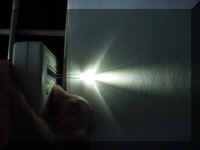 |
| Mask the leads with some tape exposed so you
can stick it to something while the paint dries. |
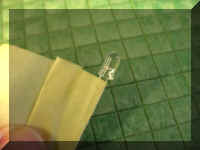 |
| Spray the LED with white or silver paint to
make a nice reflective coating. |
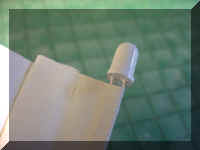 |
| Then spray with a couple of coats of black or
brown paint to block light "leakage". Let dry overnight so the
paint will be completely cured.
You can omit the paint altogether if you are just looking for a wide
angle light bulb. |
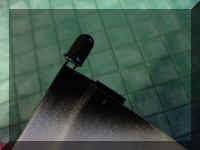 |
| Using a belt sander with a fine or medium
grit belt, sand away the round end of the LED. Go slowly to prevent heat
buildup in the plastic. Leaving the end like this will make a fine frosted
light diffuser. Or, you can sand again with fine paper then polish to a
clear lens. (Not really necessary.) |
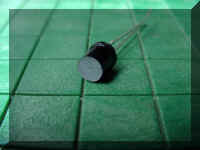 |
| Now, you have a nice flood lamp with 180
degrees of light, and about 150 degrees of good even brightness. Great for
wide-even illumination of your boat deck from relatively close
deck-mounted fixtures. Incorporate them into scale lighting
fixtures.
Remember that LEDs are not bulbs. Connect the battery "+" to
the longer lead of the LED. If you connect them to voltages
greater than their rated "forward voltage" you must wire them with a
resistor calculated to limit the current to the LED. Since this one was
rated at 4 volts, I connected directly with two AA batteries (about 3.2
volts) and got a nice bright light. If you are experimenting, put a
milli-amp
meter in series to be sure that the amperage to the LED is equal to
or less than the LED's "Max forward 20mA continuous" current
rating. This will ensure that it will not burn out soon. Most are good for
50,000 to 100,000 hours (11 years) of continuous use.
|
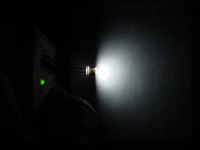 |
| To keep the wiring simple, I installed all
lights into the removable pilot house assembly.
Here I installed 7 of the "flood-lamp" LEDs and red &
green marker LEDs on the roof. All of the flood lamps are pointed down. |
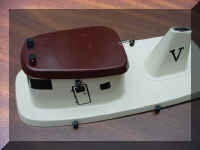 |
| Flood lamps are secured with a quick dab of
low-temp hot-melt glue. (I held a damp paper towel on the outside of the
plastic to keep it cool, when quickly applying a dab of glue. |
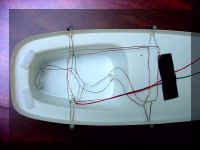 |
| I connected the parallel circuit to 3
alkaline batteries and got the brightness I needed. Use of a resistor will
be necessary if you have to use a higher supply voltage. |
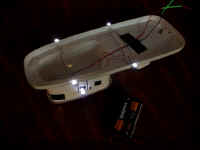 |
| I need to add
one light at the front of the pilothouse, and maybe a pair on the top of
the stack to illuminate the V's on each side. |
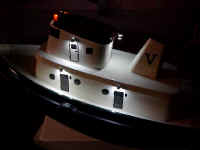 |
|
|